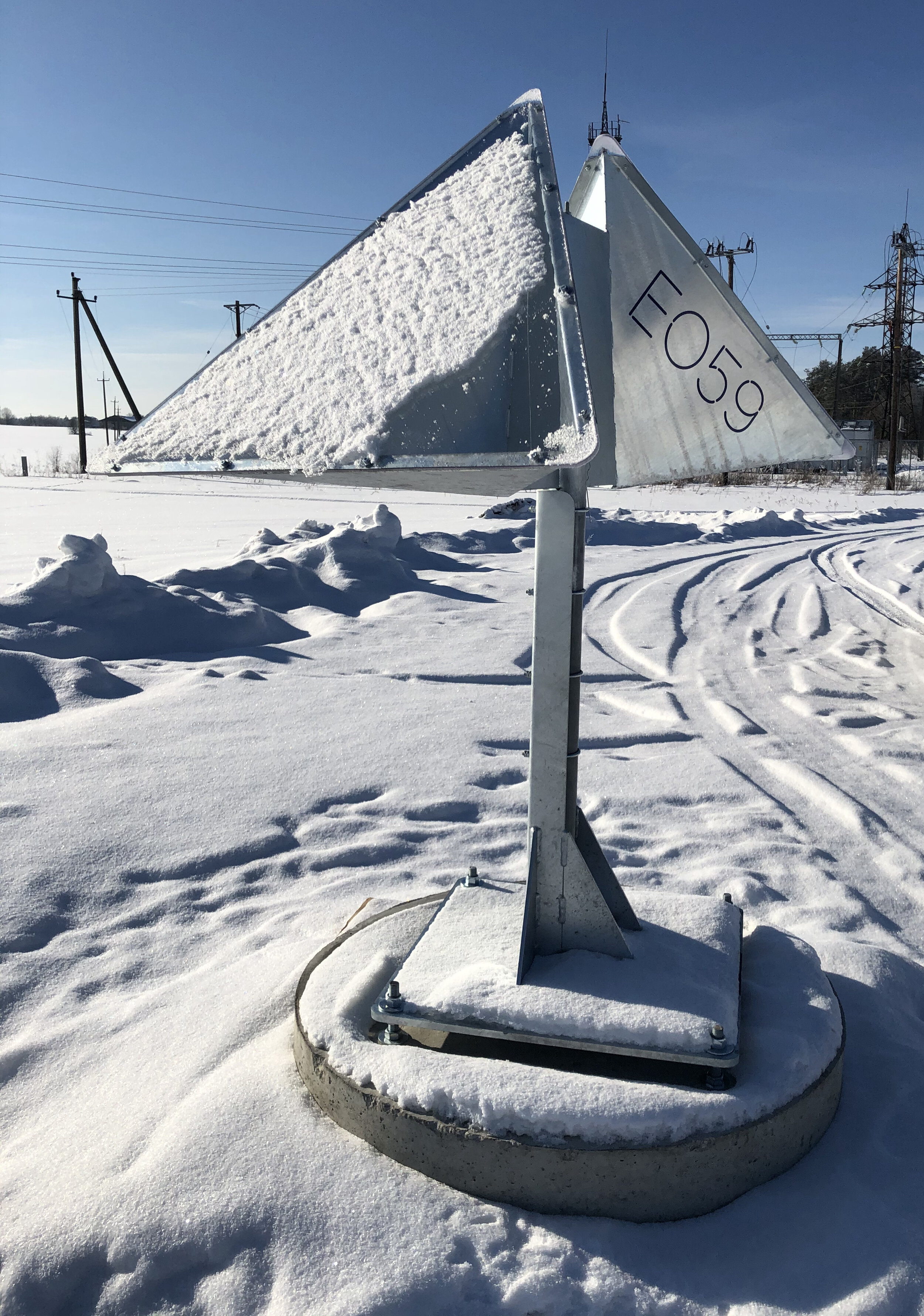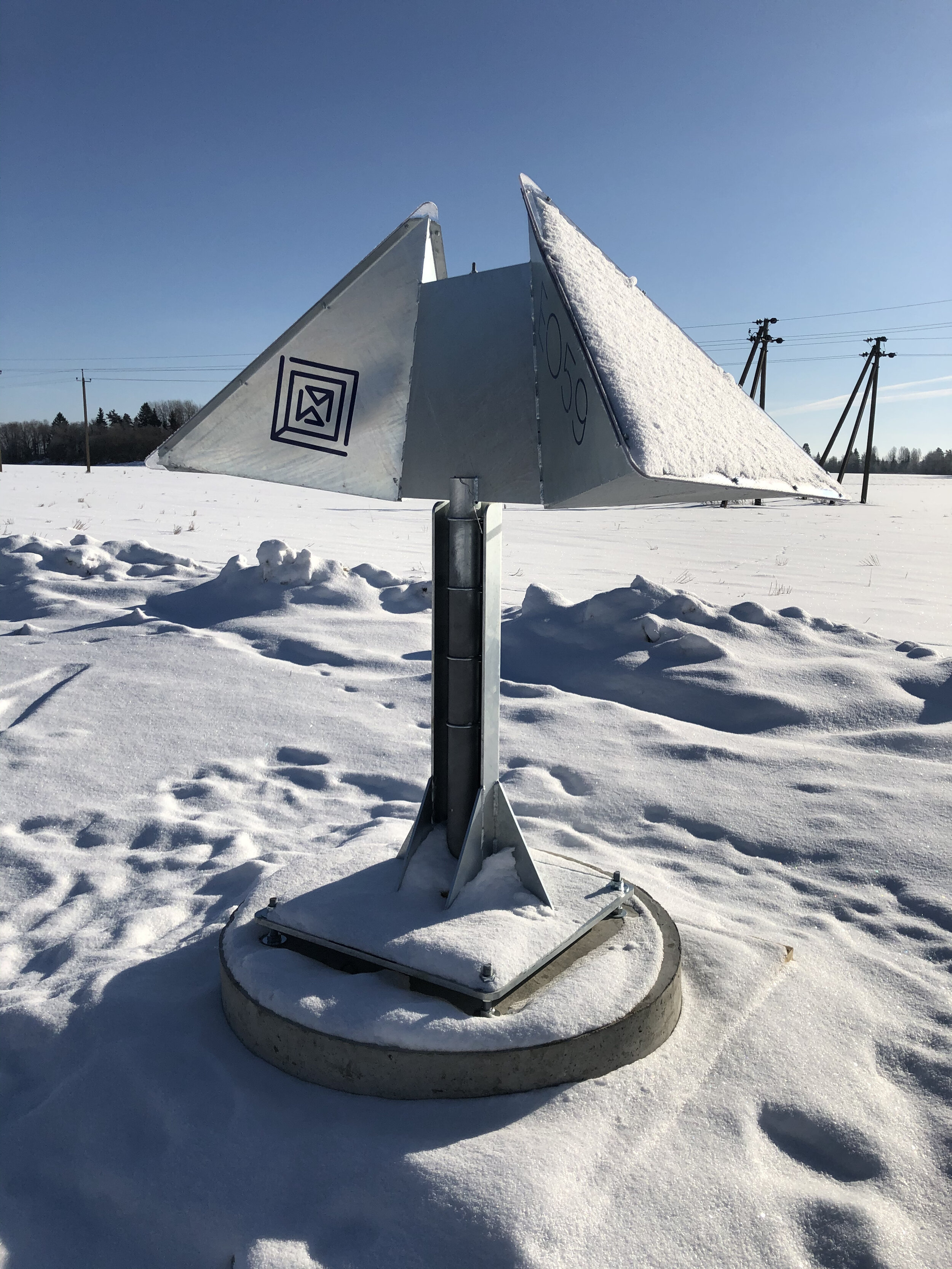Magic Mirror on the Wall… The Most Sought Reflection Of Them All.
Every day we deliver remote sensing insight from EO59 InSAR deformation data on fascinating infrastructure around the world, from dams to highways, power plants to ports, and everything in-between. That work relies on a closely calibrated system of mathematics, physics, satellites, radar systems and software all driving high accuracy data from a stable reflection.
Many of those sites contain a peculiar metallic object that draws a lot of stares. Often referred to in publications as either a corner reflector, or artificial reflector it is at its root a radar reflector. It’s a mirror placed on a specific surface that provides a strong, stable, return signal to the InSAR systems we employ.
Where to use reflectors?
They are often used to bring signal to areas where there is low reflectivity or stability in signal. An area such as a grass field, a forested space, or a smooth asphalt area. There are also instances where the viewing geometry is less than ideal to observe the deformation of a surface, such as a vertical wall. These conditions present an opportunity to mount a reflector to a structure which will enable reliable viewing of that point’s deformation.
Confidence boosters.
Reflectors can be co-located with a traditional survey monuments, allowing all of us to correlate the precision of the InSAR measurements with that of existing survey data enhancing confidence of everyone on the site team. This also allows us to connect the InSAR time series data to previous records of surveying, further building trust in the tremendous accuracy of InSAR and extending baseline datasets. We can go as far as also outfitting the reflectors with removable GPS devices where ongoing redundant verification is desired.
A Reflection for All Seasons.
In areas which are partially snow-covered during periods of the year, the all-weather reflectors provided by EO59 enable continued monitoring spring, summer, winter, and fall. This also provides a unique opportunity to observe the effects of snow loading on structures or freezing conditions on surfaces.
Our Superpower Techniques.
Using the benchmark persistent scatter (PS) method of time series analysis a newly installed reflector would not be visible for the first nine months of its installation, owing to the requirement for a robust ‘stack’ of observation images for analysis. With a unique method developed by EO59, it is possible to add reflectors to a site and observe their motion within six weeks of installation, bringing valuable reliable data to your project when needed.
Ease of Installation.
There are countless reflector designs wandering the internet. Unfortunately, they are notoriously challenging to produce accurately, and if so, can cost clients tremendously in installation costs and lost data for the reflector. Data loss results when the reflector is installed improperly or manufactured poorly and satellite overflights are unusable for determining its position accurately. Proven reflectors provided from EO59 are affordable, lightweight, low profile and simple to install.
Most crucial to the successful deployment of the magic mirror on the wall radar reflector is interpreting its data into actionable information. Something that we at Schnabel Engineering have developed in concert with EO59 as part of our Infrastructure Monitoring Service. We combine on-site instrumentation with our 65 years of Engineering know-how to deliver the industry’s best insight from InSAR reflectors anywhere, anytime.
Allen Cadden, P.E., D.GE is a Principal with Schnabel Engineering, Inc in Chadds Ford, PA where he leads the companies GeoStructural Practice. He is an active member of the ASCE Grouting Committees and ICOG and is a Past President of the Geo-Institute of ASCE. Mr. Cadden received his BSCE and Masters of Engineering from Virginia Tech, Blacksburg, Virginia and is a licensed engineer in ten states.




